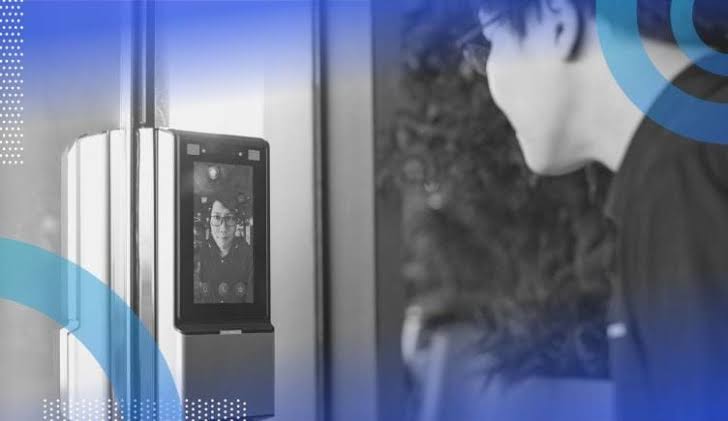Brown pigment in vintage photos, frequently referred to as sepia tones, is a captivating component of photographic records that provides intensity, warmth, and nostalgia to photos. Let’s delve into ten surprising statistics about approximately brown pigment in vintage photos, exploring its origins, importance, and enduring appeal in the realm of pictures.
1. Origins of Brown Pigment in Vintage Photos
brown pigment in vintage photos, normally referred to as sepia tones, has its roots in the early days of images. This unique coloration emerged from the chemical tactics utilized in growing and firming photographic prints. Unlike cutting-edge coloration photography, which captures a full spectrum of colors, early photographic strategies predominantly produced black-and-white photographs. However, over the years, these monochromatic prints underwent natural chemical adjustments, lead to the sluggish development of brownish colors.

2. Symbolism and Emotional Impact of Sepia Tones
The brown pigment in vintage snapshots holds a significant symbolic and emotional price. Sepia-toned images are regularly associated with nostalgia, sentimentality, and a yearning for the beyond. This emotional effect stems from the warm, muted tones that evoke an experience of warmth and familiarity. Many visitors find sepia-toned pix comforting and relatable, as they bridge the gap between historical moments and personal reminiscences.
3. Artistic Expression Through Sepia Tones
Photographers and artists have embraced brown pigment in vintage photos as a powerful tool for creative expression. Sepia tones can dramatically modify the temper and ecosystem of a photograph, lending it an undying and evocative satisfaction. Artists frequently use sepia toning to create a sense of historical authenticity or to deliver unique emotions consisting of nostalgia, melancholy, or romance. The planned choice of sepia tones adds intensity and resonance to the visible narrative.
4. Preservation Challenges and Conservation Efforts
While sepia-toned photos have a unique aesthetic attraction, they also face demanding maintenance situations. The natural materials and chemical strategies worried about growing sepia tones make those prints at risk of fading, discoloration, and deterioration through the years. Conservationists and archivists appoint specialized techniques to guard and keep sepia-toned photos, consisting of archival framing, controlled humidity environments, and digital preservation methods.
5. Influence on Photographic Styles and Genres
Brown pigment in vintage photos has left an indelible mark on diverse photographic styles and genres. From portraiture to documentary pictures, sepia tones have been used to rouse distinct themes and evoke specific intervals in records. For example, sepia-toned pictures of historic occasions can historical viewers lower back in time, at the same time as sepia images frequently exude a classic beauty and timelessness. The versatility of sepia tones lets photographers to imbue their work with an experience of narrative depth and emotional resonance.

6. Technological Advances in Digital Sepia Effects
In the digital age, improvements in generation have made it possible to recreate sepia tones digitally. Photographers and digital artists can now practice sepia outcomes in their photos through the use of specialized software programs and enhancing strategies. Digital sepia outcomes allow for more control over the tonal features and nuances of sepia tones, offering artists a flexible tool for innovative expression. This combination of conventional esthetics with contemporary technology has multiplied the opportunities for sepia toning in current images.
7. Cultural Significance and Historical Documentation
Sepia-toned photos preserve enormous cultural and ancient value as visual artifacts. These photos function as ancient files, capturing moments in time and keeping cultural history. Sepia tones are regularly related to vintage photography, archival collections, and circle of relative albums, reflecting a rich tapestry of human reviews and reminiscences. The cultural importance of sepia tones extends beyond esthetics, representing a tangible link to the beyond.
8. Impact on Visual Storytelling and Narrative Photography
Brown pigment in vintage photographs plays an important role in visual storytelling and narrative images. Sepia tones can decorate the narrative intensity of a picture, imbuing it with layers of meaning and emotion. Photographers use sepia toning strategically to carry topics along with nostalgia, resilience, or the passage of time. Sepia-toned photos regularly evoke a feeling of introspection and reflection, inviting visitors to immerse themselves within the tale at the back of the picture.
9. Artistic Preferences and Style Choices Among Photographers
Many photographers have a desire for sepia firming because of its aesthetic attraction and storytelling potential. Sepia tones provide a traditional, undying look that transcends trends and fads, making them a popular desire among artists searching to create enduring, evocative photos. The warm, muted hues of sepia can remodel normal scenes into charming vignettes, adding a hint of antique beauty to current pictures.

10. Enduring Popularity and Timeless Appeal of Sepia Tones
Despite the evolution of images and the appearance of coloration imaging, sepia tones continue to revel in enduring popularity and undying appeal. Sepia-toned images evoke an experience of nostalgia and authenticity that resonates with viewers of every age. Whether used in ancient documentation, first-rate art photography, or personal projects, brown pigment in vintage photos is a cherished detail of the photographic historical past, bridging generations and keeping recollections in a warm, inviting palette.
More : Quora
11. Psychological Impact of Sepia Tones on Viewer Perception
Studies have shown that sepia-toned pix can evoke precise emotional responses and perceptions in visitors. The heat, earthy tones of sepia were related to emotions of warmth, nostalgia, and comfort. These psychological associations can affect how viewers interpret and connect to sepia-toned snapshots, making them especially powerful for eliciting emotional responses and conveying mood in visual storytelling.
12. Historical Evolution of Sepia Toning Techniques
The manner of sepia toning has advanced through the years, with early photographers experimenting with numerous chemicals and toning methods to attain desired shade outcomes. The introduction of sepia toners, which include sodium sulfide and gold chloride, revolutionized the firming system, permitting photographers to control the intensity and hue of sepia tones. Today, digital sepia results mirror traditional firm strategies, even as imparting more flexibility and precision in color manipulation.
13. Cultural Variations in Sepia Tones Across Regions
Sepia tones have cultural variations and interpretations across extraordinary regions and creative traditions. In a few cultures, sepia-toned photos are respected for their undying elegance and historical significance. In evaluation, other cultures may partner sepia tones with specific intervals in records or artistic actions. These cultural nuances upload intensity and diversity to the appreciation of sepia-toned pictures on a global scale.
14. Conservation Challenges and Preservation Strategies
Conserving sepia-toned photographs presents particular challenges due to the inherent instability of organic substances utilized in early photographic methods. Factors inclusive of light exposure, humidity, and environmental pollution can boost the degradation of sepia-toned prints. Conservation efforts awareness on archival storage, digitization, and healing strategies to guard sepia-toned photos for destiny generations and make sure their continued cultural relevance.
15. Contemporary Revival of Sepia Tones in Digital Artistry
In modern digital artistry, sepia tones have experienced a revival as artists and architects rediscover the undying enchantment of antique esthetics. Digital sepia consequences are frequently utilized in graphic design, web layout, and multimedia initiatives to awaken a sense of nostalgia, authenticity, and class. The versatility of virtual sepia tones lets in for experimentation with color grading and mood enhancement, supplying artists with a huge variety of creative possibilities.
Also Read: Hardware Resources
Conclusion: Embracing the Timeless Charm of Brown Pigment
Brown pigment in vintage photos, manifested through sepia tones, holds a timeless attraction and cultural significance that transcends technological improvements and inventive tendencies. From its origins in early photography to its modern revival in digital artistry, sepia toning continues to captivate audiences and storytellers alike. The heat, muted colors of sepia evoke feelings, reminiscences, and narratives that bridge beyond and gift, making it a cherished detail of visual heritage and creative expression.










